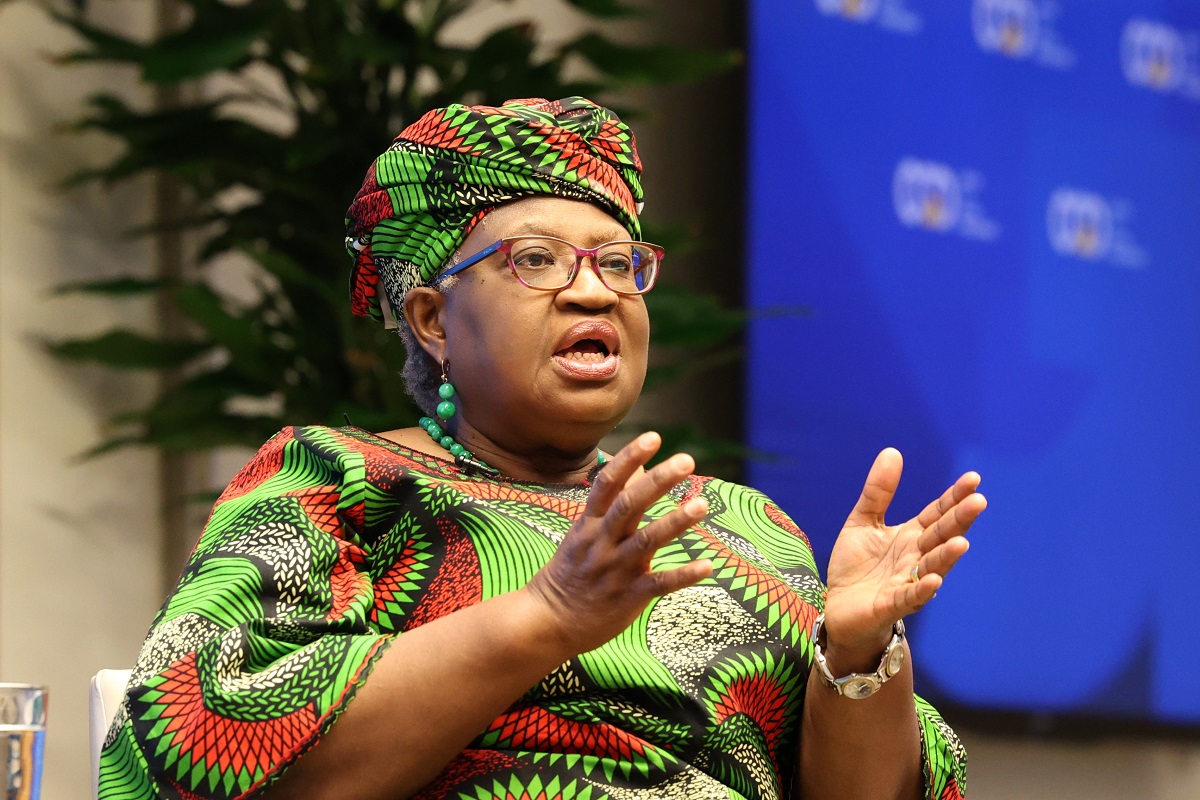Recommended
Amidst the debate, fears, political polarization, and regrets surrounding globalization, we cannot ignore a central reality: much of it is not reversible or even resistable. As in other periods of human history where new connections are forged between geographies and civilizations—whether driven by empire building, technological change, regime change, or climate change-driven migration—Pandora’s Box, once opened, cannot be closed. The flow of goods, services, people, and capital will continue across borders and increasingly encompass once isolated parts of the world.
The globalization debate is often posed in terms of how or how much to raise barriers. We would be better served by focusing on how to reshape the rules and policies to enhance the benefits and reduce the costs of globalization, for both countries and people. As an analogy, think of sea level rise and the choice between building ever higher but brittle seawalls versus enhancing the absorptive capacity of living shorelines.
Below we explore the major forces that will shape globalization in the future and draw some implications for policy and institutional changes needed at the global level and across a broad swath of countries.
What will drive the future of globalization?
A host of factors, many unforeseeable, will determine the course of globalization. But it is useful to try to isolate the most important drivers and those that are already apparent. Here are five, encompassing economics, politics, and institutions.
Economic logic
In the rush to declare the end of globalization, it is important to remember that the theory of comparative advantage hasn’t gone away. It remains both cost effective and efficient for firms to source their supply chains from across the globe. Lower transport costs and technology have made that easier and that will remain the case. Digitalization is driving that process even faster in the globalization of services. These compelling reasons for the huge investment in global supply chains will continue to drive firm behavior. The COVID-19 pandemic has shown us how costly and difficult it can be to unwind these chains. And the recent bounce back in trade (other than travel and tourism) is already demonstrating that re-shoring expectations are probably inflated. It would be a mistake to conclude that firms will be willing to bear the often-higher costs and competitive risks of sourcing everything locally in the post-pandemic world. Politics may play more of a role going forward in shaping supply chains, but it will not supersede economics.
Demographics
The scale of both migration and displaced populations has become a major source of international debate and domestic political tensions in a growing number of countries. Yet, migration and labor mobility are an essential feature of a world where populations are stagnant and aging in some countries but young and growing elsewhere. They also reflect the human cost of conflict and climate induced displacement, neither of which is likely to diminish in the near term. Properly managed, migration can be a major, even critical, source of opportunity with shared benefits for sending and receiving countries – as shown by CGD research.
Unfortunately, the global system was mostly built around flows of goods and services and, to a lesser extent, capital. The lack of international cooperation and political and financial burden sharing on migration is becoming increasingly untenable. Common standards and rules for treatment of asylum seekers, multilateral resources for helping receiving countries bear the costs of conflict- or climate-driven migration surges, standardized and efficient guest work programs, multilateral support for economic policies that help migrants become growth-drivers, all these are possible if governments perceive their common interest in collectively managing migration to maximize gains and minimize costs.
The rise of global public goods (GPGs)
Recognition is growing that our own lives are impacted by events that can only be managed effectively through global coordination. Pandemics and climate change are the most obvious, but biological and cyber terrorism, combatting illicit financial flows, data privacy rules, and rules on the use of artificial intelligence, are all examples where we need nearly everyone to act on the same or parallel path for the world to be safe. But the difficulties we are seeing in mounting an effective global response to even the most pressing problem of ending this pandemic or reaching carbon agreements at COP26 in a month, reflect two other forces that have also become stronger.
The populist backlash from both right and left
While the two sides approach it from opposite ends and have very different values, they attribute some common problems to globalization. For both, globalization is associated with across-the-board liberalization, growing inequality, financial crisis, and a sense of not being able to control one’s own economic and social destiny. COVID-19 has in many ways reinforced the belief that the pandemic wouldn’t have been as bad if we weren’t so open. Evidence suggests otherwise.
Intensifying rivalry between China and the US
The worsening tensions and rhetoric on both sides are making it much harder for the two largest economies to cooperate even on the issues where such cooperation is in their own national interest instead choosing to engage in “strategic competition”. And the strains are increasingly compelling other countries to choose sides, re-dividing the world at a time when collective success depends more than ever on collective action. It does not bode well when the White House hosted a Global COVID-19 Summit, with representatives from more than 100 governments and other partners, and did not invite China, the world’s largest producer of vaccines. In theory, the two countries could insulate their common efforts to combat climate change from differences on most other issues. But, as we saw in the Cold War, in practice such exceptions are very rare and highly vulnerable to ongoing political risk.
Where does this leave us? Long-term policy and institutional implications
Reconciling globalization with national security
Globalization must mutate to suit the national interest more broadly defined. Economic realities will be part of the national interest as will the need to cooperate on global threats, but these will need to be balanced against the need to reduce linkages with countries that are less reliable as they move away from the market democracy model and to respond to domestic political pressures from left and right. We need better, evidence-based, and trusted public decision-making mechanisms for weighing short-term vs. long-term economic impacts and security benefits vs. economic costs.
Trade: Widening the aperture
Rules and policies have traditionally focused on benefits for global consumers based on comparative advantage. Going forward, countries will need trade rules and rule adjustments that allow them to also pursue other national objectives – labor and environmental standards, urgent health needs, and gains for job-creating, green, and socially beneficial producers. This could mean allowing well-targeted subsidies not subject to countervailing duties, border carbon adjustment mechanisms that help low-carbon firms compete on a level playing field, intellectual property protection waivers for vaccine production, or common disciplines for protecting data privacy.
Migration: Collective action
New international agreements and governance structures will have to be built to help manage and share the short-term costs of migration for receiving countries, along with better strategies for integrating migrants into productive employment. This is probably unrealistic at the global level. Progress may be more feasible in certain regions that could then serve as models for global policies (just as trade liberalization started as—and is increasingly returning to—a regional phenomenon).
Helping capital flow where it is most needed
Clamping down on global flows of private capital as part of the anti-globalization fervor is inefficient for the same reasons as clamping down on goods/services trade. The IMF has already recognized that some regulation is needed depending on the stage of capital market development and has moved a considerable distance in supporting capital controls of certain types and under certain conditions. But poorer countries are still largely left out of cross-border private investment flows, and even emerging markets receive relatively little green investment. Official capital to support private investments with positive externalities needs to be enlarged and better targeted. This means bigger international financial institutions (IFIs), and more catalytic, efficient use of their capital. It also means major changes in the business models of multilateral development banks. Especially for MDB private finance arms, the volume of their own transactions should no longer be the central focus. Their success should be measured chiefly by the volume of the private capital they mobilize for GPGs and poverty reduction. IFI shareholders need to lead the way.
Global architecture for GPGs
Individual IFI governance and G20 governance fragmented across finance, health, education, migration, and anti-terrorism channels are no longer sufficient, as we are seeing in the global COVID-19 vaccination failure. This doesn't mean eliminating IFI boards or downgrading the G20 finance channel. Rather it means building new workable governance structures that bring together all the actors needed to effectively address the different GPG challenges. One such example is the proposal to create a body bringing together health and finance ministers from the G20 and some other countries to regularly review the status of pandemic preparedness and to ensure that critical gaps are identified and filled. More broadly, there is a need to augment the voice and representation in the G20 of poor countries, among the most vulnerable to cross-border challenges.
The bottom line is that globalization will have to evolve with a more comprehensive concept of national interest, defined in broader terms than economic efficiency to include pressing social and environmental challenges confronting both rich and poor countries. In parallel, the management of global flows will require new and augmented multilateral structures that bring together disparate ministries, poorer vulnerable countries, and key private actors. This will certainly make globalization and its management more complex, but it is far better than trying to erect barriers in a vain attempt to stop irresistible, and potentially very beneficial, global forces.
We are grateful to Hannah Brown for her assistance and to Alan Gelb, Arvind Subramanian, Charles Kenny, Mikaela Gavas, Scott Morris, and Stefano Manservisi for valuable comments and suggestions.
Disclaimer
CGD blog posts reflect the views of the authors, drawing on prior research and experience in their areas of expertise. CGD is a nonpartisan, independent organization and does not take institutional positions.







